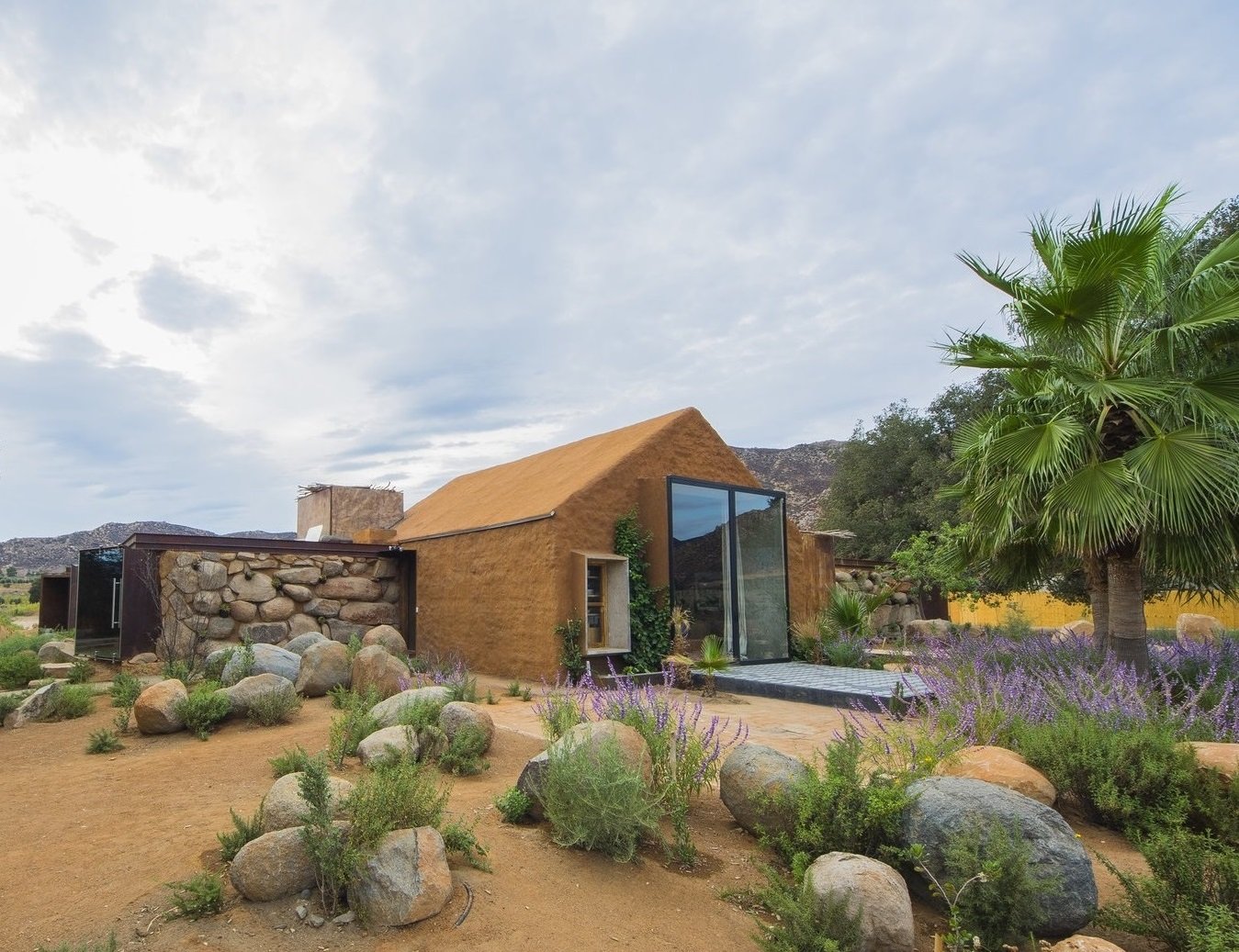#13063. Earthen Facade: Harmony of Modern Minimalism and Desert Landscape
This is an impressive example of modern desert architecture, where traditional earthen building techniques blend with contemporary minimalism. The facade is constructed with what appears to be adobe or rammed earth in a warm ochre tone that harmonizes beautifully with the surrounding desert landscape. The monolithic form of the structure with its smooth, curved roofline creates an organic silhouette that seems to have emerged from the desert itself.
The contrast between the earthy walls and modern panoramic windows is particularly expressive. The large glass surfaces are framed with thin black profiles, creating a precise geometric accent against the textural facade. Notable is the use of stone masonry in the lower portions of the walls and as supporting elements—this adds textural diversity and visual stability to the facade.
The facade is successfully complemented by landscape design, where rounded boulders and drought-resistant plants (including lavender plantings and palm trees) create a transitional zone between architecture and nature. The house excellently demonstrates the principles of contextual architecture, where the structure doesn't contradict its surroundings but becomes an organic extension of them.
For application in private construction, several techniques can be borrowed: use of natural materials with textures corresponding to the local landscape; organization of contrasting inserts (glass/wood) to create accents; smooth, organic roof forms; integration of landscape design into the architectural concept of the house. This approach allows for creating a dwelling that is not only environmentally friendly but also visually connected to its environment.
